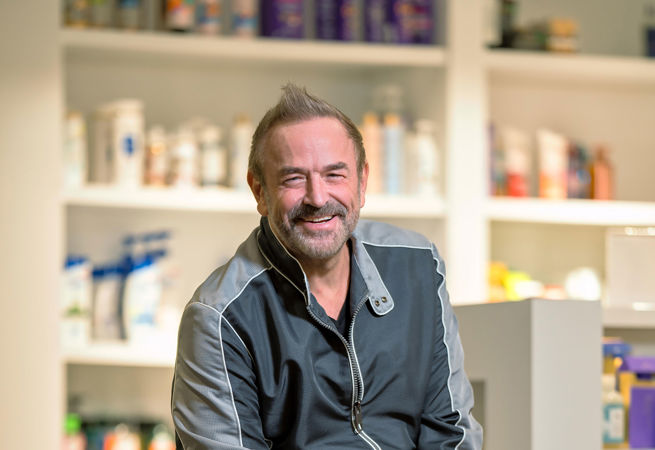
Jim Krivda
Head of Creative Development, Turpaz
Can you talk about your experience with Indian sandalwood and what it evokes for you?
Sandalwood is one of the standard gold star queen ingredients. It is a classic perfumery ingredient that is so essential in so many fragrances that it's almost impossible to overstate its importance in the industry. From fine fragrance to flavours even, it is an essential ingredient you need to have.
I was trained in the 80's and early 90's and every fragrance included sandalwood. It was the backbone of every fragrance. So, I learned extensively about naturals and how they are grown and about the symbiotic relationship with other plants.
Quality Indian sandalwood is an investment. You want it to be responsibly sourced and sustainable.
What are the technical/creative elements you are looking for with each submission?
We would like to see participants explore sandalwood in a way that they wouldn't typically get to do in their day-to-day work.
I think back to when I was a training perfumer, you have that open mindedness to try something new. As a senior perfumer, you've got to open your mind to new approaches.
What is also interesting is seeing how the senior perfumers enter; their approach is slightly different. It is much more finished, smooth, finessed. However, the problem with that is you can lose your creative edge. It's about walking that line between creative and commercial.
In regard to the judging process itself, I don't like to talk too much at the beginning. We reviewed 50 fragrances in two hours. We smell the top note, rank it from 1-5 initially from an emotional perspective (like a consumer) and then smell it again on the dry down.
We all came up with our favourites and half the time we agree and other times we need to discuss the rationality of why we picked what we picked.
Do you have an emotional reaction to smelling the fragrances? Does it bring you to a place?
As you look at it a little longer, you can notice the techniques used to create each fragrance. I'm looking at the construction. Some are so well constructed but if they don't have a creative signature, it won't make the cut.
[Regarding technique] You will smell a note like sandalwood but you will also see how people combine it with other woody or floral notes. You have to have a balance, a well-structured fragrance, otherwise it collapses. It will smell raw or jagged. Disharmonious.
That is the biggest thing with making a commercial fragrance, you want to get it nice and balanced, but you don't want to lose creativity.
Smelling this as a creative work, there are no limits on it. Another one of my criteria is: would a consumer wear this?
Quality Indian sandalwood is an investment.
You want it to be responsibly sourced and sustainable.
Jim Krivda
How do you think this competition will benefit the fragrance industry/ASP?
There are more opportunities now because there are so many different avenues for fragrance and so many fragrances. Thirty years ago, there were a couple of hundred a year, now there's thousands. We are more global and there are more opportunities to work on projects with colleagues from around the world.
I remember right before the pandemic walking into Bergdorf's and there was a whole floor of fragrances. We went through and smelt as many as we could to look for what was creative and interesting.
The challenge now is to make something unique. Something that stands out and says something, whilst also being wearable for commercial perfumes (but that's not an issue with this competition).
I started when Giorgio and Tresor were launched - if you won one of those, it was unbelievable how much the business was worth, how much you were celebrated. Back then, it was a bit more narrow. I think perfumers work on a lot more different products than 30 years ago. Now, we work on lots of candles, personal care, fine fragrance. You have a much broader range of products you're working with.
Given the major changes from the last two years, from COVID to supply chain issues, where do you see perfumery/ingredients headed in the future?
I was amazed at how fine fragrance and candles grew during the pandemic. I never stopped working the entire time, in fact I was working more - fragrance is recession proof!
I think people had the opportunity to explore something they were curious about but didn't know much about. I think they really learned about fragrance. We are now educated consumers and self-taught perfumers.
[Regarding supply chain issues] Dipropylene glycol prices, for example, skyrocketed. Companies were paying 5x the price; purchasers were scrubbing the globe looking for ingredients. Transportation costs were also impacted. Supply chains are really a global economy. It is important to be good stewards of the earth finding sustainable options and doing it in a way that's good for everyone.
